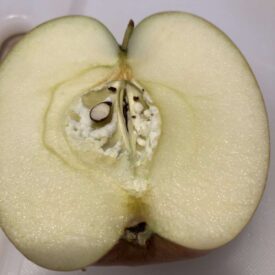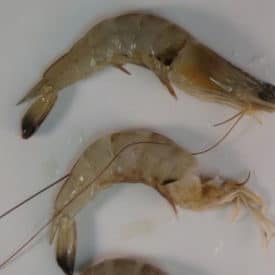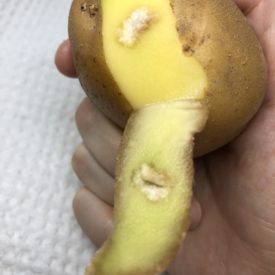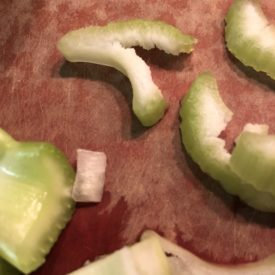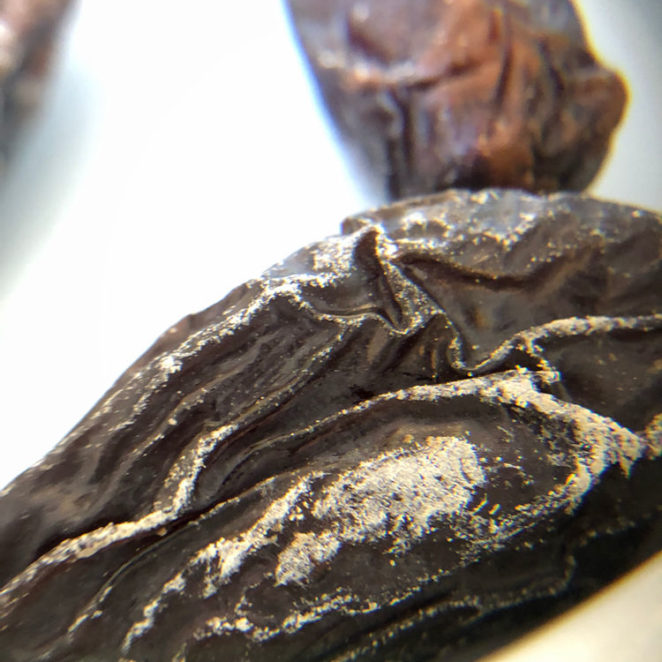
What you see: White areas on dates you’ve had for a while
What it is: Sugar!
Eat or toss: It’s just sugar. The dates will probably be harder and drier than when you first bought them. Steer clear if you smell anything off, but as long as you don’t see fuzzy mold, which is quite unlikely, you should be fine. You can even heat them in a pot with a little water to freshen them up.
You can eat dates with white patches of sugar
Dates, packing lots of sugar and relatively little moisture, are generally quite shelf stable. But if they’re stored for too long and exposed to lots of changes in temperature and humidity, their surfaces can develop a white and crusty landscape.
Such “sugaring” or “sugar bloom” can also show up on raisins, particularly on the ridges of the wrinkles. The Raisin Production Manual notes that this is likely “because the skin’s greater permeability in this area allows the migration of soluble solids to the exterior.”
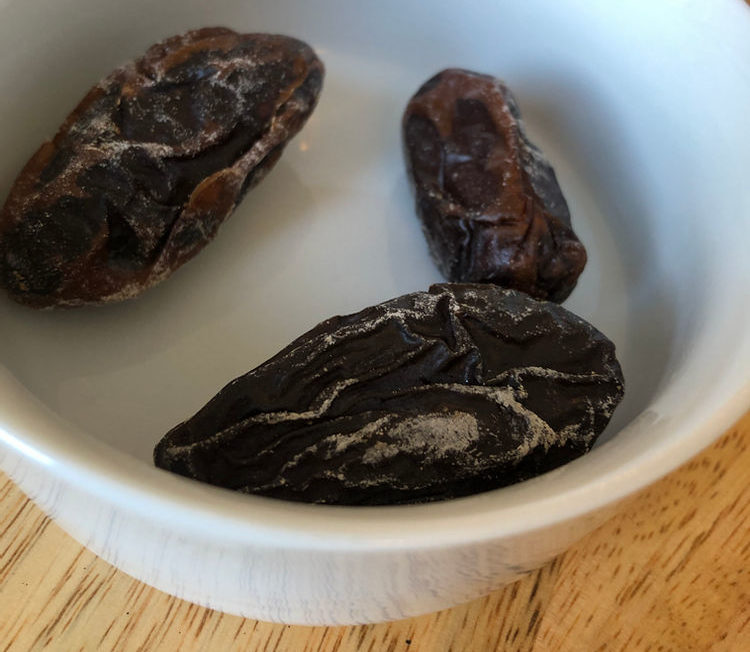
Indeed, take a close look at the date pictured here, or the ones you may be contemplating eating. You’ll probably notice that the snowy sugar dots concentrate on the tops of ridges.
You can even revive dried out dates and eliminate the sugaring at home. A little water soak will help, possibly with a little heat from the stove, advises Elhadi M. Yahia, a professor at the Autonomous University of Querétaro in Mexico who has written about the science of harvesting and processing dates. Before the water gets hot enough to boil, the sugar crust should dissolve away and the dates should soften, he said.
White patches on dates are unlikely to be mold
The white crusty spots you might find on dates in your kitchen are highly unlikely to be mold. That’s because dates generally don’t pack enough water to support mold growth. According to a USDA report, “Molds are of little consequence in the spoilage of commercially packed dates except in very moist lots. They may cause large losses before and just after the fruit is harvested if rains or periods of high humidity occur at that time.”
How do you know if dates have gone bad?
So, while mold formation isn’t impossible, it’s an issue that date farmers, not consumers, are much more likely to encounter. It is possible that yeast could grow on dates in your kitchen, rendering them unpalatable, but you’d probably smell alcohol or something sour. They would also not taste right, their color might be off and they might be puffy. Any white stuff from yeast would be more likely to show up in creases of the date, not in the ridge-top patches more common with sugar crystallization.
What’s the best way to store dates?
To extend shelf life, keep your dates in the fridge (or even the freezer if you aren’t going to eat them for a while). Dates with higher moisture content will especially benefit from cool temperatures.
SOURCES:
- Elhadi M. Yahia. Food Science & Post-harvest Handling Professor. Autonomous University of Querétaro, Mexico. Leader of the Phytochemicals and Nutrition Laboratory.
- Dates: Postharvest Science, Processing Technology and Health Benefits. Yahia, Elhadi; Lobo, Gloria; Kader, Adel. Chapter from Postharvest Science, Processing Technology and Health Benefits, Edited by Muhammad Siddiq, Salah M. Aleid and Adel A. Kader. 2014.
- Date Palm Cultivation. FAO Plant Production and Protection Paper. Edited and compiled by Abdelouahhab Zaid (Chief Technical Adviser/Director, UNOPS – Date Palm Research & Development Programme, United Arab Emirates). Food and Agricultural Organization of the United Nations. 2002. Chapter 9: Date harvesting, packinghouse management and marketing aspects. Baruch “Buki” Glasner, A. Botes, A. Zaid and J. Emmens
- The Date Palm (Phoenix dactylifera L.): Overview of Biology, Uses, and Cultivation. HortScience. ChihCheng T. Chao and Robert R. Krueger. Online Publication Date: Aug 2007
- Date Development, Handling, and Packing in the United States. Agricultural Research Service. United States Department of Agriculture. Agriculture Handbook No. 482. G. L. Rygg. Issued November 1975
- The Commercial Storage of Fruits, Vegetables, and Florist and Nursery Stocks. Robert E. Hardenburg, Alley E. Watada, Chien Yi Wang. U.S. Department of Agriculture, Agricultural Research Service, 1986The Commercial Storage of Fruits, Vegetables, and Florist and Nursery Stocks. Robert E. Hardenburg, Alley E. Watada, Chien Yi Wang. U.S. Department of Agriculture, Agricultural Research Service, 1986 P. 29 – 30.

